
All categories
Featured selections
Trade Assurance
Buyer Central
Help Center
Get the app
Become a supplier

(220 products available)























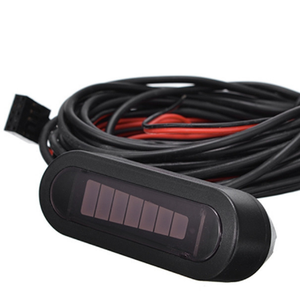
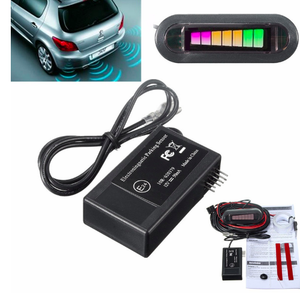
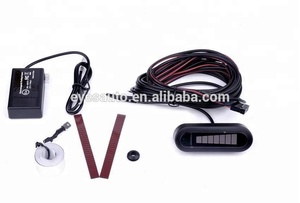
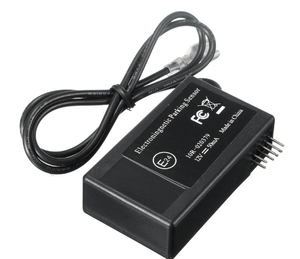
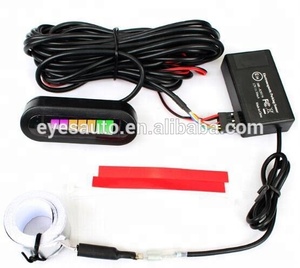
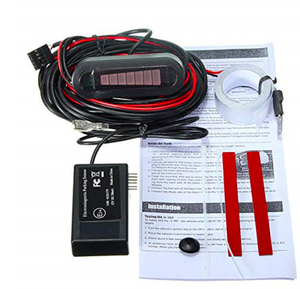
Electromagnetic parking sensors are devices that aid drivers in parking their vehicles safely and accurately. These sensors utilize electromagnetic waves to detect obstacles and provide real-time information to drivers. Generally, they fall into two categories:
Ultrasonic Parking Sensors
Ultrasonic parking sensors are the most common type of sensor in vehicles. They operate using sound waves to identify objects around the vehicle. Here's how they work:
The sensors mounted on the vehicle’s bumpers emit sound waves continuously. When these sound waves hit an obstacle, they bounce back to the sensor. The system calculates the distance to the obstacle based on the time it takes for the sound waves to return. If an object is detected, the system activates an audible alert that gets louder as the vehicle approaches the obstacle.
Additionally, the sensor can display visual warnings on the screen, showing the proximity and location of the objects. Some advanced ultrasonic sensors have multi-directional capabilities, allowing them to detect obstacles from various angles, improving overall safety. They also have adjustable sensitivity features that enable the sensors to be fine-tuned to detect only significant obstacles, reducing false alarms from small objects.
Electromagnetic Parking Sensors
Electromagnetic parking sensors are advanced sensors that use electromagnetic waves to assist with parking. They are typically more precise than conventional sensors. These sensors can detect both moving and stationary objects, providing a comprehensive understanding of the parking environment.
Electromagnetic sensors are often integrated into the vehicle's guidance system. They can provide visual information about the surroundings on a display screen, helping drivers make informed decisions while parking. Moreover, they can automatically control the steering of the vehicle, allowing for automated parking in tight spaces. Additionally, they can analyze the environment and calculate the optimal parking path, assisting with parallel parking.
Below are some specifications of the electromagnetic parking sensor that are important to business buyers:
Detection Range
The detection range indicates the maximum distance the sensor can reach to avoid obstacles. The average detection range is 1.5 meters, but this can change depending on the make and model.
Working Frequency
Electromagnetic parking sensors emit low-frequency sound waves to detect obstacles. This is referred to as the working frequency. The average working frequency is 40 HZ to 70 HZ.
Operating Voltage
The operating voltage refers to the amount of power needed for the sensors to work properly. Most parking sensors need about 12 volts, which they can draw from the car's battery.
Current Consumption
Current consumption refers to the amount of current the sensor uses. The average current consumption of parking sensors is 20 mA when they are active and 5 mA when they are in standby mode.
Below are the maintenance requirements for the electromagnetic parking sensor:
Choosing the right electromagnetic parking sensors for cars requires careful consideration of several factors to ensure they meet safety needs and expectations. Here are some tips:
The installation process of an electromagnetic parking sensor system is very easy and can be done by anyone irrespective of their technical knowledge. The steps are as follows.
It’s important to note that the installation process may vary a little depending on the brand and model of the parking sensor. Apart from that, some brands come with DIY-friendly kits, while others don’t. Therefore, look for kits that are designed for DIY installations if planning to install the sensors by oneself.
Furthermore, always follow the manufacturer’s instructions when installing an electromagnetic parking sensor. The above steps are just a general guide to help understand the process better.
Q1: How are electromagnetic parking sensors different from traditional ultrasonic sensors?
A1: Traditional ultrasonic sensors use sound waves to detect objects, while electromagnetic sensors use electromagnetic fields. This makes electromagnetic sensors effective in detecting stationary objects that might not reflect sound waves well.
Q2: Can these sensors be installed on all vehicle types?
A2: While they are designed for most vehicles, installation difficulty may vary. Larger vehicles like trucks may require additional components due to their size. It's best to consult the manufacturer's guidelines.
Q3: Do electromagnetic parking sensors require maintenance?
A3: Generally, they require less maintenance than other types. However, keeping the sensor clean and free from dirt or debris that could interfere with its function is important.
Q4: Can they detect small objects like bicycles?
A4: While they can detect most objects, the sensor's sensitivity level determines small objects like bicycles. If the sensors are not calibrated to detect small objects, there might be a risk of collision.
Q5: Are there any environmental conditions that can affect the performance of these sensors?
A5: Extreme weather conditions like heavy rain, snow, or ice can affect the sensor's performance. Similarly, the presence of metal objects nearby can interfere with its electromagnetic field, leading to false alarms or reduced detection range.